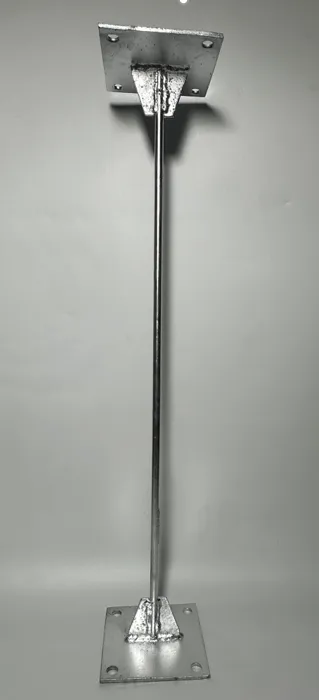loading...
- No. 9, Xingyuan South Street, Dongwaihuan Road, Zaoqiang County, Hengshui, Hebei, China
- admin@zjcomposites.com
- +86 15097380338
- Welcome to visit our website!
grp mesh flooring
Understanding GRP Mesh Flooring A Comprehensive Overview
In recent years, GRP (Glass Reinforced Plastic) mesh flooring has gained significant traction in various industries due to its unique properties and benefits. This versatile material is increasingly popular among architects, builders, and facility managers. But what exactly is GRP mesh flooring, and why is it becoming a go-to choice for different applications? In this article, we will delve into the characteristics, advantages, applications, and maintenance of GRP mesh flooring, providing you with a comprehensive understanding of this innovative product.
What is GRP Mesh Flooring?
GRP mesh flooring is composed of a composite material made from a combination of glass fibers and plastic resin. The mesh aspect refers to the gridded structure created by the integration of these materials, which provides enhanced strength and stability. These floors are manufactured using a molding process that allows for the creation of custom sizes and profiles to suit various requirements.
The key feature of GRP mesh flooring is its non-corrosive nature, which makes it ideal for environments that require high durability. It is often seen in applications ranging from industrial settings to commercial spaces and even in residential buildings.
Advantages of GRP Mesh Flooring
1. Durability One of the standout features of GRP mesh flooring is its incredible strength. Unlike traditional materials like wood or metal, GRP is resistant to corrosion, rust, and chemical damage. This makes it particularly suitable for environments exposed to harsh substances or extreme weather conditions.
2. Lightweight Despite its robustness, GRP mesh flooring is lightweight, making it easier to install and handle. This can result in reduced labor costs and time during construction or renovations.
3. Slip Resistance Safety is a top priority, particularly in industrial and commercial settings. GRP flooring is often designed with slip-resistant surfaces, providing enhanced traction even in wet or slippery conditions.
4. Low Maintenance GRP mesh flooring requires minimal upkeep. Unlike wooden floors that may succumb to rot, or metal that could rust, GRP can be easily cleaned and does not require sealing or painting. This low maintenance requirement is especially appealing for busy workplaces.
5. Versatility GRP mesh flooring is suitable for a wide range of applications, including walkways, platforms, stairs, and even as a base for heavy machinery. Its customization options allow it to fit the specific needs of various industries, including food processing, pharmaceuticals, and manufacturing.
grp mesh flooring

6. Environmental Benefits Many manufacturers utilize sustainable practices in the production of GRP materials, making it a more environmentally friendly option. Additionally, its long lifespan reduces the frequency of replacements, contributing to waste reduction.
Applications of GRP Mesh Flooring
The applications of GRP mesh flooring are vast and varied. Here are some of the key sectors where GRP is commonly used
- Industrial Environments Factories and warehouses often require robust flooring solutions that can withstand heavy loads and exposure to chemicals. GRP mesh flooring meets these demands, providing reliable support and safety.
- Commercial Spaces Retail establishments, shopping malls, and supermarkets benefit from the slip-resistant properties of GRP, ensuring that customers can move safely around the premises.
- Outdoor Areas GRP is an excellent choice for decking and walkways in parks, marine docks, and recreational areas due to its resistance to water and UV damage.
- Residential Projects Homeowners are increasingly opting for GRP mesh flooring for outdoor patios, garages, and other areas where durability and safety are paramount.
Maintenance of GRP Mesh Flooring
Maintaining GRP mesh flooring is straightforward. Regular cleaning with mild soap and water is usually sufficient to keep the surface free from debris and stains. For more intensive cleaning, pressure washing can be utilized without damaging the floor. It is essential, however, to inspect the flooring periodically for any signs of wear, particularly in high-traffic areas.
Conclusion
In conclusion, GRP mesh flooring is an innovative and durable solution suitable for a wide variety of applications. Its numerous advantages, including strength, lightweight design, slip resistance, and low maintenance, make it an attractive option for both commercial and industrial settings. As industries continue to seek sustainable and resilient materials, GRP mesh flooring is poised to become an even more integral part of our built environment. Whether you're an architect, contractor, or property owner, understanding the benefits and applications of GRP mesh flooring can help you make informed decisions that enhance safety, durability, and overall building performance.
-
The Rise of FRP Profiles: Strong, Lightweight, and Built to LastNewsJul.14,2025
-
SMC Panel Tanks: A Modern Water Storage Solution for All EnvironmentsNewsJul.14,2025
-
GRP Grating: A Modern Solution for Safe and Durable Access SystemsNewsJul.14,2025
-
Galvanized Steel Water Tanks: Durable, Reliable, and Ready for UseNewsJul.14,2025
-
FRP Mini Mesh Grating: The Safer, Smarter Flooring SolutionNewsJul.14,2025
-
Exploring FRP Vessels: Durable Solutions for Modern Fluid HandlingNewsJul.14,2025
-
GRP Structures: The Future of Lightweight, High-Performance EngineeringNewsJun.20,2025
